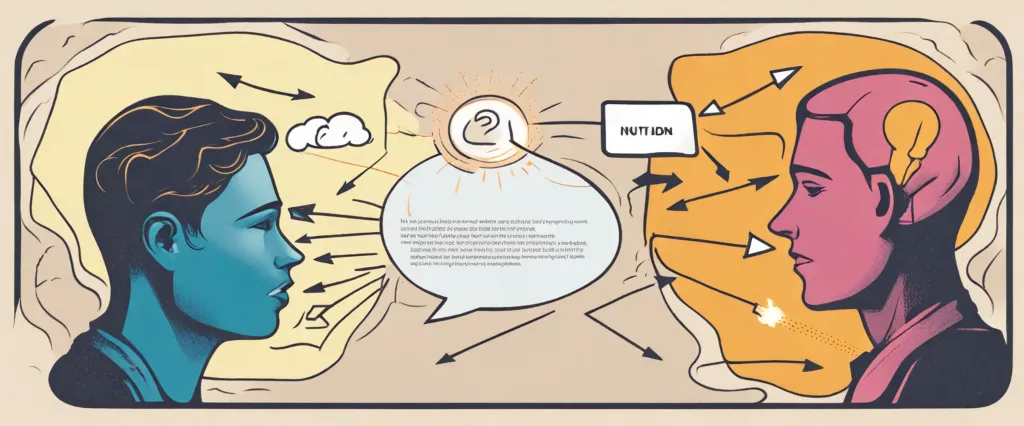——Thinking Strategically by Avinash K. Dixit & The Decision Book by Mikael Krogerus

In the ever-evolving and unpredictable realm of decision-making, the ability to think strategically is acknowledged as a vital skill. Being able to analyze complex situations, assess risks, and devise effective solutions can significantly impact the outcomes of various aspects of our lives. Recognizing the importance of strategic thinking, authors Avinash K. Dixit and Mikael Krogerus have presented distinct yet equally intriguing approaches in their acclaimed works, “Thinking Strategically” and “The Decision Book,” respectively.
Through their comprehensive exploration of strategic decision-making, Dixit and Krogerus offer readers insightful tools, frameworks, and real-world examples to enhance their critical thinking abilities. While both books share a common goal of guiding individuals towards better decision-making, they embody distinct perspectives, employing diverse methodologies to address this objective. This comparative study aims to uncover the unique attributes, strengths, and limitations of these works, ultimately shedding light on the power of strategic thinking.
Book 1: Thinking Strategically by Avinash K. Dixit:
In the realm of competitive decision-making, Avinash K. Dixit’s “Thinking Strategically” stands as a landmark work that has transformed the way we approach strategic thinking. Co-authored with Barry Nalebuff, this masterpiece presents a comprehensive framework through which readers can analyze and manipulate the dynamics of complex decision-making scenarios.
Dixit introduces game theory as a crucial tool for strategic analysis, unraveling a wide range of scenarios that encompass personal, business, and political spheres. The book dives into the realm of human psychology, illustrating how emotions, incentives, and biases often influence decision-making processes. Dixit’s expertise as both an economist and game theorist shines through, as he navigates readers through complex mathematical models and practical illustrations.
Book 2: The Decision Book by Mikael Krogerus:
In “The Decision Book,” Mikael Krogerus takes a slightly contrasting approach, condensing the vast scope of decision-making into a concise and visually compelling tome. Co-authored with Roman Tschäppeler, this work explores 50 models and frameworks that offer a holistic understanding of decision-making processes.
One of the defining features of Krogerus’ book lies in its format, which seamlessly blends illustrations, infographics, and concise explanations to deliver key concepts to readers. The authors dissect various cognitive biases, present thought-provoking questions, and provide ingenious tools that facilitate effective decision-making across different domains, from personal choices to professional dilemmas.
Conclusion:
While both books aim to empower readers with the necessary frameworks and tools for strategic decision-making, they diverge in terms of approach, depth, and presentation. Avinash K. Dixit’s “Thinking Strategically” provides an intricate exploration of game theory and behavioral economics, while Mikael Krogerus’ “The Decision Book” distills decision-making models into visually compelling snapshots. Through this comparative study, we will delve into the unique strengths and limitations of these works, ultimately enabling us to grasp the power of strategic thinking in diverse contexts.
Brief Summary of Two Books
Thinking Strategically by Avinash K. Dixit
Thinking Strategically” by Avinash K. Dixit is a book that explores the techniques and principles behind strategic decision-making. The book focuses on the importance of understanding game theory and applying strategic thinking in various aspects of life.
The author begins by introducing the concept of strategic thinking and explains how it differs from classical economic thinking. He argues that strategic thinking involves considering not only one’s own decisions but also the potential actions and reactions of others involved in a given situation. By analyzing different scenarios, players, and possible outcomes, individuals can make more informed decisions and create advantageous strategies.
The book covers various strategic concepts, such as the importance of analyzing and understanding the different types of games, including simultaneous and sequential games, as well as their strategies and outcomes. Dixit also explores how to effectively negotiate and cooperate in strategic interactions, emphasizing the significance of trust, information, and communication.
Additionally, the author discusses different strategic scenarios, including pricing and competition, bargaining, and decision-making in uncertain environments. He provides readers with practical examples and case studies to illustrate the principles discussed and strengthen their understanding of strategic thinking.
Overall, “Thinking Strategically” offers readers a comprehensive guide to strategic decision-making, providing valuable insights and tools to navigate complex situations effectively. It highlights the importance of anticipating and responding to the actions of others, ultimately helping readers make better, more strategic choices in both personal and professional realms.
The Decision Book by Mikael Krogerus
“The Decision Book” by Mikael Krogerus is a concise and comprehensive guide that presents fifty key decision-making models in a practical and accessible format. The book offers insights from a diverse range of fields such as psychology, economics, and business management, equipping readers with techniques to make better decisions in their personal and professional lives.
Each model presented is accompanied by a clear explanation of its background, principles, and how it can be applied. Some of the models covered include the Eisenhower Matrix, the SWOT analysis, the Pareto principle, and the Six Thinking Hats. These models help readers understand different aspects of decision-making, such as time management, strategic analysis, problem-solving, creativity, and risk assessment.
The book is structured in a way that allows readers to quickly find and understand the specific model they need in any given decision-making situation. It also includes practical examples and case studies to illustrate the models’ applications.
Overall, “The Decision Book” provides a valuable toolkit for individuals seeking to improve their decision-making skills, offering a systematic approach to tackling dilemmas and making more effective choices.
Comparison between Two Books

Similarities in topic word
Both “Thinking Strategically” by Avinash K. Dixit and “The Decision Book” by Mikael Krogerus discuss the importance of strategic thinking in decision-making processes.
In “Thinking Strategically,” Dixit emphasizes the need for individuals and organizations to think beyond short-term gains and consider the long-term consequences of their decisions. He argues that strategic thinking involves analyzing situations from multiple perspectives, understanding the interdependence of choices, and actively anticipating and responding to the actions of others. This approach helps individuals and businesses navigate complex environments, identify opportunities, and mitigate risks.
Similarly, “The Decision Book” focuses on decision-making techniques and tools that can enhance strategic thinking. Krogerus presents various models, methodologies, and frameworks, such as the Eisenhower Matrix, SWOT analysis, and the Six Thinking Hats, to help readers make better decisions. The book encourages readers to adopt a systematic and structured approach to decision-making, aiming to improve their ability to evaluate options, assess risks, and align choices with their objectives.
Both books emphasize the need for holistic thinking, considering not only the immediate consequences of decisions but also their long-term impact. They highlight the importance of analyzing different perspectives, identifying opportunities, and anticipating potential outcomes. Moreover, both books aim to equip readers with practical tools and frameworks that can enhance their decision-making processes and enable them to think strategically.
Overall, while “Thinking Strategically” focuses more on the conceptual understanding of strategic thinking, “The Decision Book” provides more practical tools and techniques for implementing strategic decision-making. However, the underlying message of both books is clear: strategic thinking is crucial for success in a complex and uncertain world.
Divergences in topic word
Thinking Strategically by Avinash K. Dixit and The Decision Book by Mikael Krogerus both discuss strategies and decision-making processes, but they approach these topics from different perspectives and provide distinct insights.
One divergence in the books lies in their overall focus. “Thinking Strategically” primarily centers on game theory and its application in various scenarios, such as business, politics, and personal interactions. Avinash K. Dixit delves into strategic thinking using real-world examples and mathematical models, elucidating how players anticipate the actions of others and make optimal choices based on these predictions.
On the other hand, “The Decision Book” offers a broader exploration of decision-making techniques and concepts. Mikael Krogerus presents a compilation of models, tools, and theories that can be employed to enhance decision-making in professional and personal contexts. It covers a wider range of topics, including time management, problem-solving, and communication skills, alongside strategic thinking.
In terms of structure, “The Decision Book” is more concise and visually oriented. The layout incorporates illustrations, diagrams, and charts, which make the content easily accessible and digestible. It divides decision-making into different sections, with each section focusing on a specific aspect or tool. This structure permits readers to quickly navigate through various approaches and find practical solutions to their decision-making challenges.
Conversely, “Thinking Strategically” takes a more academic approach, providing a comprehensive analysis of strategic thinking and game theory. The book delves into fundamental concepts and principles of game theory, explaining how they can be applied in different scenarios. Avinash K. Dixit not only explains various game-theoretical models, but also examines the implications of strategic behavior in different environments.
Furthermore, while both books provide practical examples and case studies to illustrate their ideas, “Thinking Strategically” places greater emphasis on mathematical models and logical reasoning. The analysis is more rigorous and grounded in principles of economics and mathematics. This focus on theoretical underpinnings distinguishes the book as a more academic read.
Overall, “Thinking Strategically” focuses specifically on strategic thinking using game theory, applying it to various real-world contexts. On the other hand, “The Decision Book” provides a wider range of decision-making tools and models, with its content being more accessible and visually appealing.

Conclusion
Both “Thinking Strategically” by Avinash K. Dixit and “The Decision Book” by Mikael Krogerus offer valuable insights and perspectives on decision-making and strategic thinking. Ultimately, the choice between the two books depends on your specific interests and preferences.
“Thinking Strategically” is a highly regarded book that delves into game theory and its applications in everyday life. It discusses how individuals and businesses can use strategic thinking to make better decisions, negotiate effectively, and navigate complex situations. This book is well-suited for readers interested in economics, psychology, or strategic planning.
“The Decision Book” provides a compact overview of various decision-making models and techniques. It offers a practical approach, presenting tools and methods that can be directly applied in different contexts. This book is ideal for readers who prefer a concise and hands-on guide to improving decision-making skills.
To determine which book is more worthy of reading, consider your specific interests and goals. If you are seeking a deeper understanding of strategic thinking and its applications, “Thinking Strategically” may be the better choice. On the other hand, if you are looking for a quick and practical manual to enhance decision-making abilities, “The Decision Book” would be a valuable addition to your reading list.


